How To Replace A Habit
HOW TO REPLACE A HABIT (ISSUE 150) OCTOBER 14, 2014
By Diane Gold
How to replace a habit is an age old idea with lots of answers. Having been trained in the martial arts, I see the answer as martial arts 101: be patient, be focused, be immediate and be consistent.
THE HABIT
The habit cycle I’ve mentioned often, along with Charles Duhigg, author of The Power Of Habit, Leo Babauta, the author of zenhabits.net, medical doctors and psychologists who clinically study how we are the ways we are and lots of others who know it from the inside out.
Just to review, the habit is the culmination of a repetition of the following:
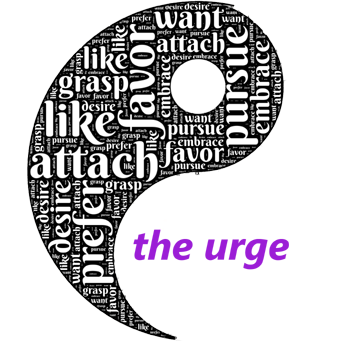
The Urge
The Behavior To Satisfy The Urge
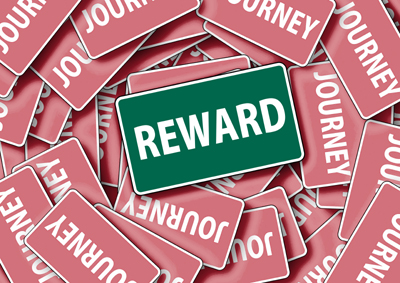
The Reward
THE HARMLESS HABIT
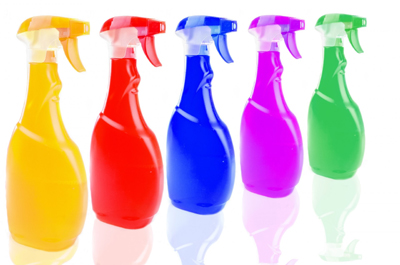 Picture a nice hot summer day at the beach with friends. Someone hands out a pretty, colored spray bottle filled with water to each person. In a playful crowd, it will take little time for someone to get a playful desire (the urge) to depress the lever of the spray bottle (the action) which would result in an expulsion of water on our friends (the reward). On a hot, sunny day, this would be harmless and probably welcome.
Picture a nice hot summer day at the beach with friends. Someone hands out a pretty, colored spray bottle filled with water to each person. In a playful crowd, it will take little time for someone to get a playful desire (the urge) to depress the lever of the spray bottle (the action) which would result in an expulsion of water on our friends (the reward). On a hot, sunny day, this would be harmless and probably welcome.
If this group goes to the beach all the time and brings spray bottles, they could all develop the habit of seeing who could spray whom first. This is the development of a habit. Because habits remain with us, if this group does not see each other for 20 years, and they finally meet at the beach with spray bottles; it will take them all but 10 seconds to start spraying each other again.
THE UNSUPPORTIVE HABIT
Not all habits are so innocent. Some are toxic and destructive, and we want to replace them. Picture eating too much, deliberately throwing up what we eat, doing drugs and alcohol, biting nails, cutting school, eating junk food and a whole lot more.
If we continue to do any one of these behaviors over and over again, we develop a habit that does not support a responsible and healthy life. Everyone has habits. Some of us are prone to unsupportive ones. Those of us who have these unsupportive habits, very often, have multiple of them. Drugs often go with alcohol, which often goes with gambling which often goes with nurturing dependent relationships which often goes with biting nails, and so on.
THE GOOD NEWS
The fabulous news is that, no matter how many unsupportive habits are lurking around, there is a way to replace them, 1 at a time. And the replacement of 1 may positively affect the desire to act out the others.
If you need habit help, go to http://warriorsofweight.com/warriorsofweight-consulting.
ONE TAI CHI STEP AT A TIME
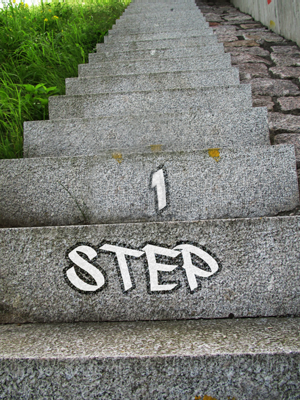 One of the mistakes we all make, at one time or other, is that we decide to take action to wrench something or many things out of our lives. We actually sit around dreaming about being a different being devoid of the habits that are causing us discomfort.
One of the mistakes we all make, at one time or other, is that we decide to take action to wrench something or many things out of our lives. We actually sit around dreaming about being a different being devoid of the habits that are causing us discomfort.
If I’ve learned 1 thing from the joys of tai chi and from replacing unsupportive habits, it is that we can succeed by taking 1 step. It’s counterproductive to take more than 1 step. I know we multitask by being on the phone while driving the car while texting while having a conversation with our passenger. These actions are actually 1 swift and consecutive behavior at a time. But, adding 1 step, with no rush, is the way.
THE FOCUS
Often times, we focus on removing things from our life. As illustrated with the spray bottle example above, as well as by a myriad of scientific research studies, once we develop a habit, it is ours. It makes little sense to focus on removing it when we can replace it. That does not mean that each habit has to be front and center just because we have developed it. It means if we replace our old behavior that caused the unsupportive habit with a new behavior that supports us, we will replace our habit with a new one. Yay!
So, we focus on some new behavior, only 1, repeating this 1 behavior over and over again until this behavior is our new habit.
THE TIMING
What’s so fascinating about habits is that, to replace them, we have between 5 and 15 seconds to act. Any longer than that and we will go back to our old behavior. If we are thinking about elaborate schemes to get rid of our habit or 5 step techniques to beat the habit; we will, unfortunately be stuck in the recidivism loop. Even 2 steps splits the attention. That’s why it’s 1 step to replace a habit Timing Is Everything
But, as we say, timing is everything.
CONCLUSION
How to replace a habit is as simple as 1-2-3, in principle. I know it can feel impossible. That feeling is just a feeling. As we say in kung fu class, when we put you on your knuckles in push-up position and ask you to hang out there, with appropriate form,
“It’s only pain.”
This is another way of teaching us to take 1 action step. If we choose to look at the pain associated with the action, our concentration may falter. If we focus on taking the 1 step only, that is, for the knuckle push up, checking each part of the body while maintaining the flat back position with tight fists, flat knuckles, elbows bent, arms no wider than shoulders, heels together, toes apart; we will succeed. When we act with the pain on the side, we will complete the exercise. If the pain becomes the focus, we have lost our direction.
The same with the new action to replace our habit. If we concentrate on the pain of leaving our old behavior, it is likely we will not do our new behavior. The pain to replace a destructive habit will be there. All we have to do is do our 1 new behavior, our 1 step. Bam! Then, we do our 1 new behavior again. And again and again until it becomes the habit of choice.
The pain will get less. When? In how long? The answer to that is “when it does.” That is not important. What is important is replacing that habit.
Onward, warriors. We are stronger than we think!
ACTION STEPS
1) Know that you will feel pain, and that that is OK and normal.
2) Know that the pain will not stop you, even though it feels excruciating.
3) Know that the mind will make you look at the pain.
4) Remember to laugh that the mind is making you look at the pain.
5) Remember that we have all gone through it, and many of us continue you to go through it daily for the sake of continuing our habit replacement.
6) Remember, you can ask for help from someone who has done it at
http://warriorsofweight.com/warriorsofweight-consulting/
![]()
If you wish to share your story, please hit reply in your email program to be contacted.
![]()
FEEDBACK
We value your feedback very much.
Please leave a comment below.
Please LIKE us on the website at:
http://on.fb.me/1cR3wVW
and on Facebook at:
http://facebook.com/warriorsofweight.
You can also follow us on Twitter @warriorsoweight.
Thanks.
![]()
DIANE GOLD, PUBLISHER AND AUTHOR
Diane Gold, Founder of Warriors of Weight, Turning Habits Into Health, is a mentor in tai chi, kung fu and meditation, a music, fitness and stress expert, dedicated mom, studying plant-based nutrition, peaceful conflict resolution and habit replacement.
She believes we can replace a habit with a directed mind. She says,
“One of the biggest reasons to teach meditation and tai chi at an early age is so that we learn to focus on what we are doing as opposed to focusing on our feelings, the weather, the past, the future.
“In order to change a habit, we need the ability to act without thought. If we haven’t had focus training, this is a hard command.
“From wherever we are at this point in our lives, we can focus on 1 step, bypassing our feelings. The only thing we need to do is take the 1 step. I’m not saying it’s easy. I’m saying we can do it if we just do it.
“I have faith in you and me. I have done it. You can do it.
“Finally, let us all take good care of ourselves because we are so worth it!”
![]()



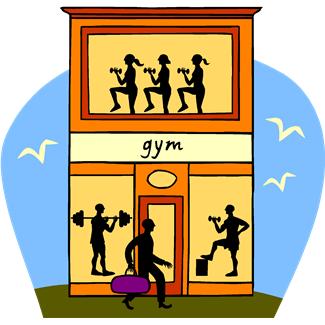 When thinking about social influence and habit change, I think of doing physical fitness like tai chi, going to the gym, going to a weight watch group, going to a rehab center. The function of each of these group activities is motivation of some kind. Let’s look at how the group motivates us.
When thinking about social influence and habit change, I think of doing physical fitness like tai chi, going to the gym, going to a weight watch group, going to a rehab center. The function of each of these group activities is motivation of some kind. Let’s look at how the group motivates us.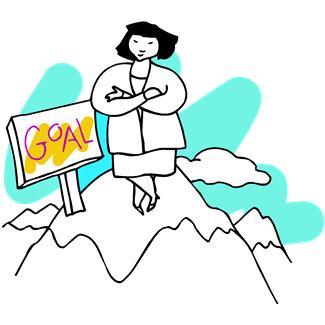 When we look at the amount of people who go back to their old habits after six months, a year, five years; it can be disheartening. There’s an interesting statistical article from 2004 about how treatment doesn’t work at:
When we look at the amount of people who go back to their old habits after six months, a year, five years; it can be disheartening. There’s an interesting statistical article from 2004 about how treatment doesn’t work at: People think tai chi is for exercise or defense, alone. It’s really for perception change. By doing a powerful exercise as tai chi is, we learn a systematic approach to movement. This system gives us tools to use in everyday life. As we acquire the patience to endure tremendous body exertion, we are learning a tool that works with anything in life. We have the understanding to know that the physical exertion and mental concentration needed to physically execute the movement is teaching us to follow through. And it is showing us we can do it.
People think tai chi is for exercise or defense, alone. It’s really for perception change. By doing a powerful exercise as tai chi is, we learn a systematic approach to movement. This system gives us tools to use in everyday life. As we acquire the patience to endure tremendous body exertion, we are learning a tool that works with anything in life. We have the understanding to know that the physical exertion and mental concentration needed to physically execute the movement is teaching us to follow through. And it is showing us we can do it. It’s the same if we surround ourselves with people who do not take drugs or drink or overeat or gamble. We will be more likely to accept behaving in a similar fashion, especially if they know we are working on habit change. If we keep repeating a new behavior in place of the old habit at the same time as building a personal foundation, we will succeed. And what’s missing at the start will no longer be missing. We will have developed, not only new behaviors, but a structure within ourselves that will sustain the way we wish to live.
It’s the same if we surround ourselves with people who do not take drugs or drink or overeat or gamble. We will be more likely to accept behaving in a similar fashion, especially if they know we are working on habit change. If we keep repeating a new behavior in place of the old habit at the same time as building a personal foundation, we will succeed. And what’s missing at the start will no longer be missing. We will have developed, not only new behaviors, but a structure within ourselves that will sustain the way we wish to live.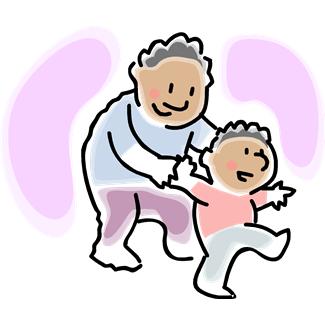 Both habits and mastery require many lessons. They are both learned behaviors that require extreme repetition. Habits are responses we cultivate as a reaction to a certain feeling, urge, itch, trigger, craving. With repetition, these responses become semi-automatic behaviors that become part of our infrastructure until we change them. Mastery is a state of prowess developed through repeating any skill set.
Both habits and mastery require many lessons. They are both learned behaviors that require extreme repetition. Habits are responses we cultivate as a reaction to a certain feeling, urge, itch, trigger, craving. With repetition, these responses become semi-automatic behaviors that become part of our infrastructure until we change them. Mastery is a state of prowess developed through repeating any skill set. When we get the same urge over and over and do the same behavior to answer the urge, isn’t that actually mastering the management of that urge? In some cases, this “management” supports our positive life style. In others, the habit burdens us or diminishes our effective productivity.
When we get the same urge over and over and do the same behavior to answer the urge, isn’t that actually mastering the management of that urge? In some cases, this “management” supports our positive life style. In others, the habit burdens us or diminishes our effective productivity.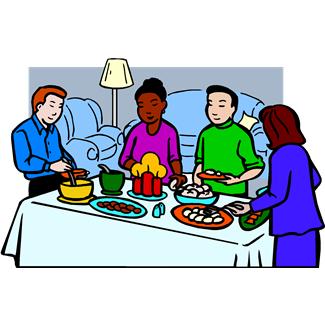
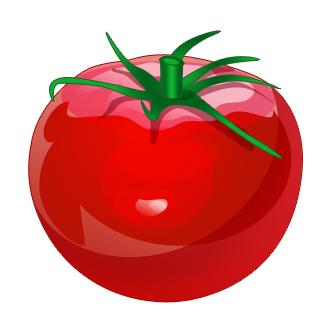
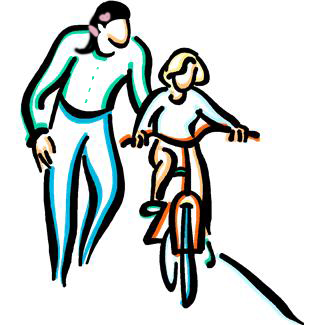 Whether we repeat our training, we learn, whether it’s riding a bike, learning to walk, learning to swim, answering our food urge mechanism by eating snack foods, answering our alcohol trigger by drinking to excess; we learn well how to immerse ourselves in the habit.
Whether we repeat our training, we learn, whether it’s riding a bike, learning to walk, learning to swim, answering our food urge mechanism by eating snack foods, answering our alcohol trigger by drinking to excess; we learn well how to immerse ourselves in the habit.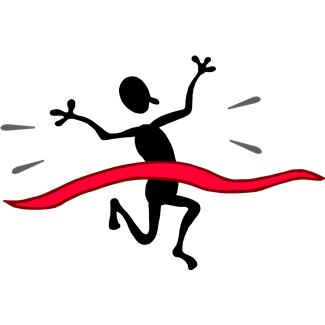 The skills used to develop a habit are focus, repetition and follow through. These are the skills needed to change a habit, too. Of course, passion is involved in the original learning and should one choose to make a change.
The skills used to develop a habit are focus, repetition and follow through. These are the skills needed to change a habit, too. Of course, passion is involved in the original learning and should one choose to make a change.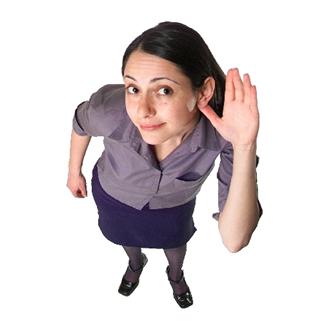 Hearing these words brought back a whole series of memories starting with a story my mother told me about her childhood. Now, I know that I have always been an explorer and that if a rule or tradition didn’t make sense to me, I always questioned it. I was encouraged to do so by both my parents.
Hearing these words brought back a whole series of memories starting with a story my mother told me about her childhood. Now, I know that I have always been an explorer and that if a rule or tradition didn’t make sense to me, I always questioned it. I was encouraged to do so by both my parents. So, let’s backtrack to when my mom was one-year-old. (This photo is not my mom. Because of her free spirit, I believe she would laugh if she saw this representation. This photo is used with lots of love and memories of nurturing.) She told me that she loved to see a plate break on the floor, that she would laugh with abandon at this phenomenon. Maybe it was the excitement of seeing the pieces scatter. It was a favorite activity, nonetheless. And my grandfather used to buy her plates so that she could knock them off her highchair so that she could laugh and be free. Yes, he was liberated, too.
So, let’s backtrack to when my mom was one-year-old. (This photo is not my mom. Because of her free spirit, I believe she would laugh if she saw this representation. This photo is used with lots of love and memories of nurturing.) She told me that she loved to see a plate break on the floor, that she would laugh with abandon at this phenomenon. Maybe it was the excitement of seeing the pieces scatter. It was a favorite activity, nonetheless. And my grandfather used to buy her plates so that she could knock them off her highchair so that she could laugh and be free. Yes, he was liberated, too.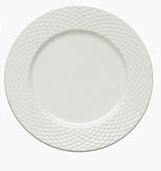 I did not throw plates, but I was encouraged to be my own person, ask questions about anything for the purpose of becoming a productive and liberated person. I can’t swear that my parents were thinking of the word “liberation” when they were raising me. They just saw no need to teach me to be seen and not heard as was and still is a popular method of child-rearing. Personally, I think this method can repress a child’s spirit and disable a child’s curiosity. Respect for elders and familial hierarchy can be taught in many ways, but free speech, in my opinion, should begin at the earliest of ages.
I did not throw plates, but I was encouraged to be my own person, ask questions about anything for the purpose of becoming a productive and liberated person. I can’t swear that my parents were thinking of the word “liberation” when they were raising me. They just saw no need to teach me to be seen and not heard as was and still is a popular method of child-rearing. Personally, I think this method can repress a child’s spirit and disable a child’s curiosity. Respect for elders and familial hierarchy can be taught in many ways, but free speech, in my opinion, should begin at the earliest of ages. Let me clarify that many people raised in the “be seen and not heard” old-school philosophy are successful, happy, shining and wonderfully balanced. There are, however, many of us raised with restrictions every time we turn around, such as don’t speak unless we are asked a question, always be available as a servant to our parents, all friends must be researched for family stature and then brought to the house for approval; we are often stressed, repressed and depressed because of it. Certainly, we are rarely liberated and feel the pain of not being trusted.
Let me clarify that many people raised in the “be seen and not heard” old-school philosophy are successful, happy, shining and wonderfully balanced. There are, however, many of us raised with restrictions every time we turn around, such as don’t speak unless we are asked a question, always be available as a servant to our parents, all friends must be researched for family stature and then brought to the house for approval; we are often stressed, repressed and depressed because of it. Certainly, we are rarely liberated and feel the pain of not being trusted. 2) We don’t speak up due to our self-image. This usually has to do with the fact that we are younger, older, the minority sex in the group, the wrong sexual orientation, a woman whose place (in in someone else’s mind) is in the home, the wrong nationality, religion or socio-economic level.
2) We don’t speak up due to our self-image. This usually has to do with the fact that we are younger, older, the minority sex in the group, the wrong sexual orientation, a woman whose place (in in someone else’s mind) is in the home, the wrong nationality, religion or socio-economic level. 2)
2)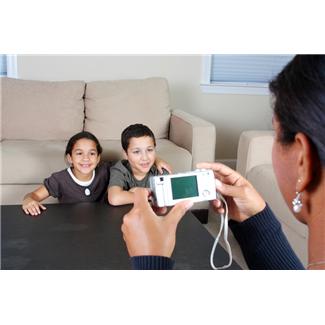
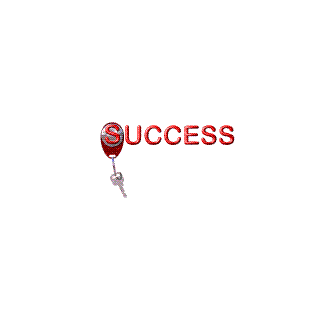 It would seem that it’d be hard to pinpoint one success habit that we need to succeed. But, it’s right in front of us and we all use it or lose it. The great thing is that everyone, more or less, can learn it. With respect to the developmentally delayed and emotionally fraught people I have and have not worked with and respect, it’s as easy as putting one foot in front of the other.
It would seem that it’d be hard to pinpoint one success habit that we need to succeed. But, it’s right in front of us and we all use it or lose it. The great thing is that everyone, more or less, can learn it. With respect to the developmentally delayed and emotionally fraught people I have and have not worked with and respect, it’s as easy as putting one foot in front of the other.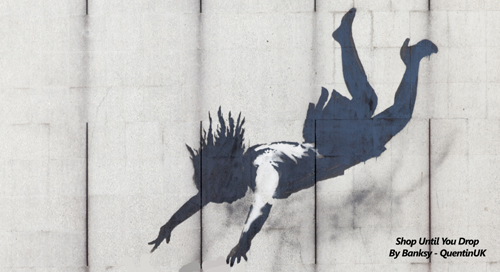
 For just about anything,
For just about anything, 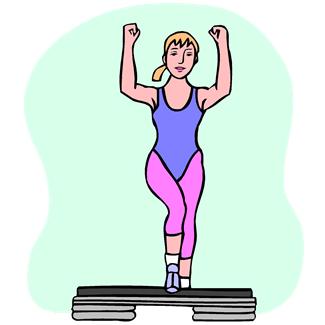
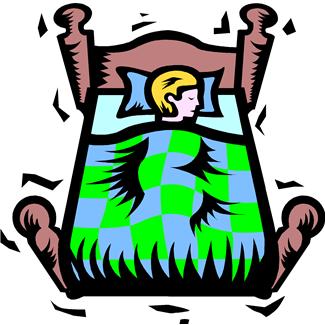
 If we have experienced a chemical set back, meaning we have overeaten or done drugs or alcohol; our body will be in the fight or flight mode. Therefore, we will have to be aware that we will be getting cues to repeat the “fall” behavior. Every time we get our cue to do excess food or drugs or alcohol, we need to act according to plan.
If we have experienced a chemical set back, meaning we have overeaten or done drugs or alcohol; our body will be in the fight or flight mode. Therefore, we will have to be aware that we will be getting cues to repeat the “fall” behavior. Every time we get our cue to do excess food or drugs or alcohol, we need to act according to plan. The important thing about learning the one necessary success habit is to follow through on a daily basis toward the goal we have set for ourselves. With substance abuse, when we get that urge, that cue to behave in a way that does not support our goals, we need to have a planned activity in mind so that we can take a positive action and get our reward. With losing face or money, the planned activity will be to take a step toward our goal within 24 hours AS IF we felt like it.
The important thing about learning the one necessary success habit is to follow through on a daily basis toward the goal we have set for ourselves. With substance abuse, when we get that urge, that cue to behave in a way that does not support our goals, we need to have a planned activity in mind so that we can take a positive action and get our reward. With losing face or money, the planned activity will be to take a step toward our goal within 24 hours AS IF we felt like it. One truth is this: the more times we do any behavior; the less offensive it becomes to us, the more we think it supports our positive lifestyle, the less foreign it becomes, the poorer our judgment becomes about the behavior and the easier it is to keep doing it.
One truth is this: the more times we do any behavior; the less offensive it becomes to us, the more we think it supports our positive lifestyle, the less foreign it becomes, the poorer our judgment becomes about the behavior and the easier it is to keep doing it.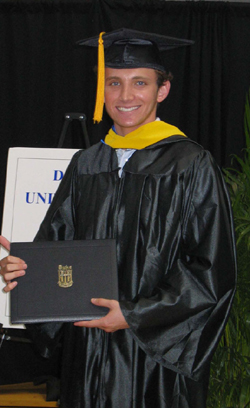

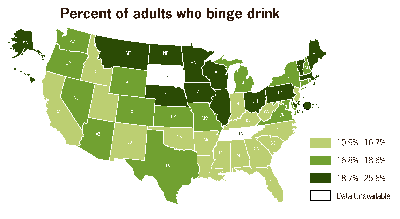
 We understand that when people say, “Oh, why don’t you just have one,” when speaking about any consumables whose “one” would trigger a series of unhealthy behaviors; it is we who choose our actions. The Greek aphorism “Know Thyself” comes into play; if we have the control to consume “one,” great. If having “one” will trigger having 100 after that, we choose and smile about it. Usually, the “one” act leads to 5,000 more of that “one” action, so the decision to abstain is preferable.
We understand that when people say, “Oh, why don’t you just have one,” when speaking about any consumables whose “one” would trigger a series of unhealthy behaviors; it is we who choose our actions. The Greek aphorism “Know Thyself” comes into play; if we have the control to consume “one,” great. If having “one” will trigger having 100 after that, we choose and smile about it. Usually, the “one” act leads to 5,000 more of that “one” action, so the decision to abstain is preferable.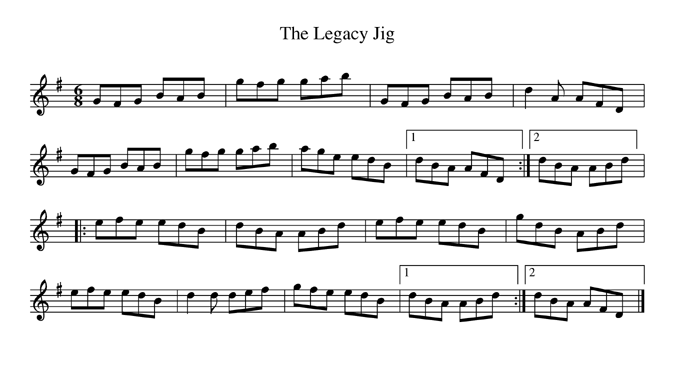

 Now, I don’t believe that blame is something helpful, but I do believe that, because women have accepted the position of inferiority, they have perpetuated a myth that carries on to this day. I also believe that, if women who are oppressed fight for their own equality (I am not speaking of the gentle oppressions where women make less money, have more domestic responsibilities, get worse jobs, but of stark, horrific oppression such as domestic slavery, sex slavery, trafficking, second class citizenship that exist in many nations), the fight would cause as many female deaths as in any civil war to date.
Now, I don’t believe that blame is something helpful, but I do believe that, because women have accepted the position of inferiority, they have perpetuated a myth that carries on to this day. I also believe that, if women who are oppressed fight for their own equality (I am not speaking of the gentle oppressions where women make less money, have more domestic responsibilities, get worse jobs, but of stark, horrific oppression such as domestic slavery, sex slavery, trafficking, second class citizenship that exist in many nations), the fight would cause as many female deaths as in any civil war to date. There are women who are born into prostitution. In certain sections of the world, 3 generations of women can be found to be prostitutes. In the red light district of Kolkata (formerly spelled Calcutta), a prevalent family business is this: the mother is a prostitute as is her mother. The father waits for the female children of his wife to become 10 years old (or worse, 7 years old) so that he can turn them out into prostitution so that the family can eat and live.
There are women who are born into prostitution. In certain sections of the world, 3 generations of women can be found to be prostitutes. In the red light district of Kolkata (formerly spelled Calcutta), a prevalent family business is this: the mother is a prostitute as is her mother. The father waits for the female children of his wife to become 10 years old (or worse, 7 years old) so that he can turn them out into prostitution so that the family can eat and live.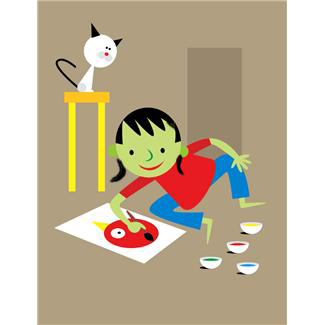 Accepting the thinking that it’s OK to putting children into prostitution for money is a bad habit. It is also a way of thinking and acting that has been accepted in current and past society as normal.
Accepting the thinking that it’s OK to putting children into prostitution for money is a bad habit. It is also a way of thinking and acting that has been accepted in current and past society as normal.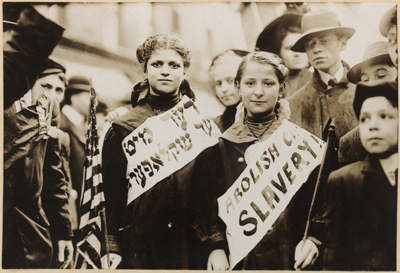 In certain cultures, women are forced into being one of many wives, forced into being consorts, forced into the life of a sex slave, a baby machine or a maid. This is partly the fault of women who accept this. But their alternative would be death, ostracism or, at least, fear of death and disfigurement.
In certain cultures, women are forced into being one of many wives, forced into being consorts, forced into the life of a sex slave, a baby machine or a maid. This is partly the fault of women who accept this. But their alternative would be death, ostracism or, at least, fear of death and disfigurement. It is time we worked on changing the concept and reality of women as slaves. It is time we all became better human beings. It’s crucial to engage in conversations. It is also important to consistently talk about abuse of women in literature and in every country in the world.
It is time we worked on changing the concept and reality of women as slaves. It is time we all became better human beings. It’s crucial to engage in conversations. It is also important to consistently talk about abuse of women in literature and in every country in the world.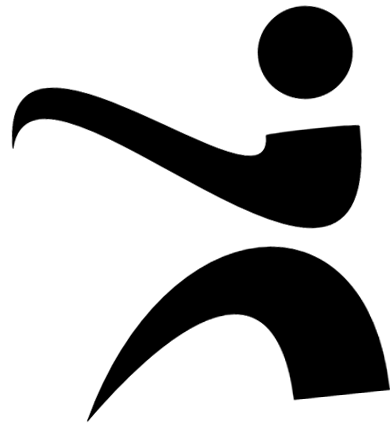 But tai chi has other functions. There is scientific evidence that tai chi also improves flexibility, focus, respiration, muscle response, memory, mental attitude.
But tai chi has other functions. There is scientific evidence that tai chi also improves flexibility, focus, respiration, muscle response, memory, mental attitude.
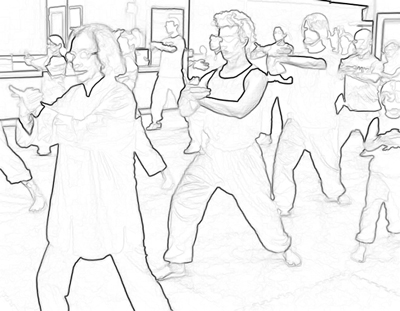 In order to learn tai chi, we have to concentrate on the actual movement we are doing. We do the same movement over and over again until it becomes familiar to us. Sounds a little like a habit, right? It is different from jumping rope, doing a dance routine, going to the gym because every time we do it, it is different. Tai chi movement involves every single part of the body. And we are different of mind and body every day. That is why it is different. As with any martial art, the movement is a tool for training and changing the mind. However, the physical way we execute the motion is related to our mood at the moment, what we choose to express, how relaxed our body is and whether we are working on warding off a potential attacker. These factors affect the movement and make it unique in the world of movement arts.
In order to learn tai chi, we have to concentrate on the actual movement we are doing. We do the same movement over and over again until it becomes familiar to us. Sounds a little like a habit, right? It is different from jumping rope, doing a dance routine, going to the gym because every time we do it, it is different. Tai chi movement involves every single part of the body. And we are different of mind and body every day. That is why it is different. As with any martial art, the movement is a tool for training and changing the mind. However, the physical way we execute the motion is related to our mood at the moment, what we choose to express, how relaxed our body is and whether we are working on warding off a potential attacker. These factors affect the movement and make it unique in the world of movement arts.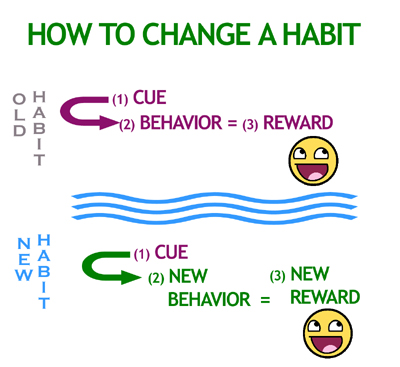 The fact that tai chi involves mind, body and the way we live our lives, but all we have to do is watch our moving hand or foot to grasp our own attention is the very reason it can help change a habit. When we get the CUE, that urge, craving, onset of desire to behave habitually, we can
The fact that tai chi involves mind, body and the way we live our lives, but all we have to do is watch our moving hand or foot to grasp our own attention is the very reason it can help change a habit. When we get the CUE, that urge, craving, onset of desire to behave habitually, we can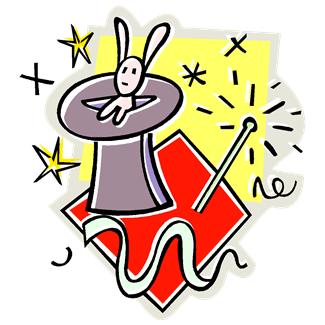 At the beginning, meaning for 3 to 4 weeks, if possible; it’s a good idea not to look at the new reward or evaluate it or compare it to the old reward. We have to remember it took lots of repetition to learn the old behavior, so give the new behavior some time to become beneficial to our lives before deciding to judge it. Otherwise the mind will play the old trick that the new behavior doesn’t work for us (which is. most of the time, a self-con so that we can go back to our old behavior).
At the beginning, meaning for 3 to 4 weeks, if possible; it’s a good idea not to look at the new reward or evaluate it or compare it to the old reward. We have to remember it took lots of repetition to learn the old behavior, so give the new behavior some time to become beneficial to our lives before deciding to judge it. Otherwise the mind will play the old trick that the new behavior doesn’t work for us (which is. most of the time, a self-con so that we can go back to our old behavior).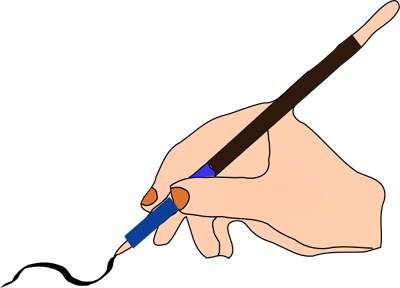 1) WRITE IT DOWN!
1) WRITE IT DOWN!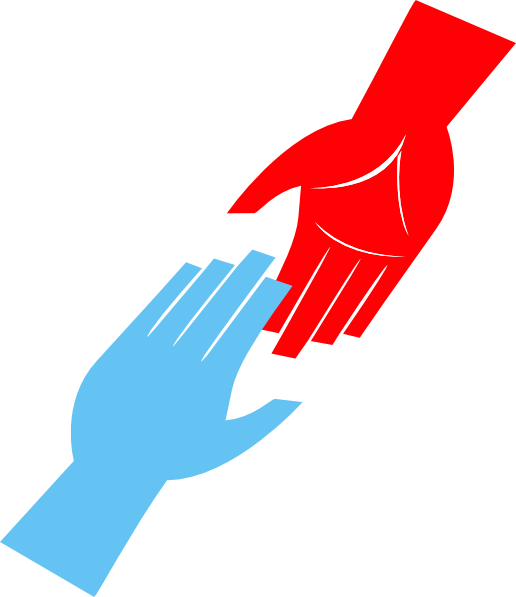 5) CALL SOMEONE
5) CALL SOMEONE Because of this training, we have the ability to consider taking the longer path if it is more strategic to get where we are going because we know patience, the first lesson in any martial art. We learn to take time out to consider, meditate, evaluate, even if, in physical combat, it is only a split second.
Because of this training, we have the ability to consider taking the longer path if it is more strategic to get where we are going because we know patience, the first lesson in any martial art. We learn to take time out to consider, meditate, evaluate, even if, in physical combat, it is only a split second. To the kung fu artist or other martial artist, there is no sense in acting with impatience, hostility, irrationality unless the behaviors of the other affect us. If our self-esteem is intact and does not depend upon how others see us or treat us, we have no need to pump ourselves up like peacocks on display being macho to find a mate or bearded dragon lizards who puff their necks to make themselves bigger when they sense a threat.
To the kung fu artist or other martial artist, there is no sense in acting with impatience, hostility, irrationality unless the behaviors of the other affect us. If our self-esteem is intact and does not depend upon how others see us or treat us, we have no need to pump ourselves up like peacocks on display being macho to find a mate or bearded dragon lizards who puff their necks to make themselves bigger when they sense a threat.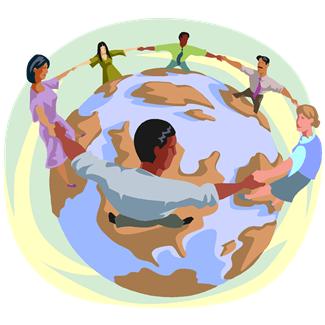 When we are older, acting the way of the child does not utilize our reason and the wisdom from our experience we have taken so long to gain.
When we are older, acting the way of the child does not utilize our reason and the wisdom from our experience we have taken so long to gain.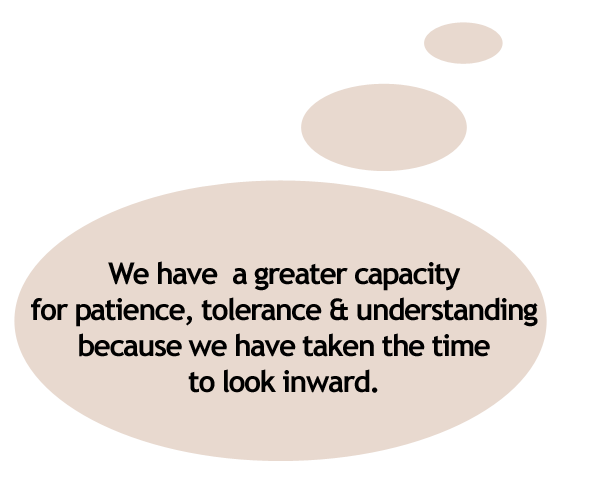 CONCLUSION
CONCLUSION
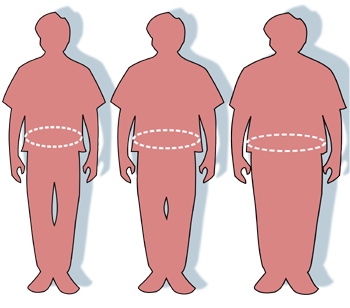 What we often think about when the word “habit” comes up are overindulgence in eating, drugs, drinking alcohol, gambling, etc. These habits are behaviors we have repeated so many times they now require a considerable effort to stop, different from what would happen should we find out that a good habit, tooth brushing, did harm to us.
What we often think about when the word “habit” comes up are overindulgence in eating, drugs, drinking alcohol, gambling, etc. These habits are behaviors we have repeated so many times they now require a considerable effort to stop, different from what would happen should we find out that a good habit, tooth brushing, did harm to us. 4) Going to our medical professional to get drugs is what we do when we are sick. Nutritional counseling is not part of going to the doctor. Why? In our current health care system, there is no reimbursement for our doctors’ talking about food. What’s even more disturbing is that some 40% of medical schools only require 1 small course in nutrition. We have been trained that this is right, and we trusted this model until our rate of disease continues to soar.
4) Going to our medical professional to get drugs is what we do when we are sick. Nutritional counseling is not part of going to the doctor. Why? In our current health care system, there is no reimbursement for our doctors’ talking about food. What’s even more disturbing is that some 40% of medical schools only require 1 small course in nutrition. We have been trained that this is right, and we trusted this model until our rate of disease continues to soar.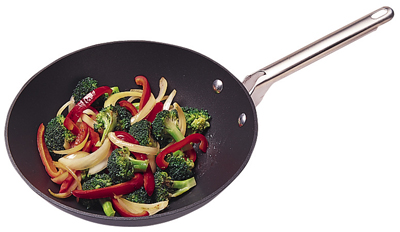 Unfortunately, we have lived our lives learning these habits. We have built habits around the idea of eating meat/poultry/fish/eggs/dairy for nutrition. The fact that there are a plethora of studies showing that these foods cause cardiovascular and chronic diseases means we will have to consider changing our habits and changing our knowledge to maintain health and, possibly, reverse sickness.
Unfortunately, we have lived our lives learning these habits. We have built habits around the idea of eating meat/poultry/fish/eggs/dairy for nutrition. The fact that there are a plethora of studies showing that these foods cause cardiovascular and chronic diseases means we will have to consider changing our habits and changing our knowledge to maintain health and, possibly, reverse sickness.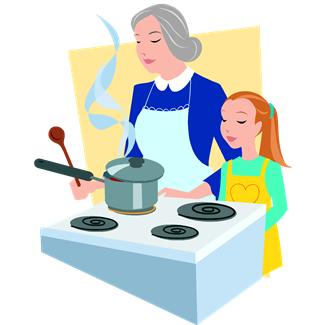 The sad thing is, for the most part, we are not aware, especially in the poorer communities, that the nutritionally calculated value of drive up food is reduced to almost nil because of the negative health side-effects from eating it. The other equally devastating issue is that those of us who know that fast food is bad don’t know what to eat as an alternative for the same shoestring budget expense. Fortunately, children are learning plant-based alternatives and ways to budget for healthy food through their elementary schools. And they are bringing this information home. Go early ed teachers!
The sad thing is, for the most part, we are not aware, especially in the poorer communities, that the nutritionally calculated value of drive up food is reduced to almost nil because of the negative health side-effects from eating it. The other equally devastating issue is that those of us who know that fast food is bad don’t know what to eat as an alternative for the same shoestring budget expense. Fortunately, children are learning plant-based alternatives and ways to budget for healthy food through their elementary schools. And they are bringing this information home. Go early ed teachers! If the habits we have collected regarding medicine, treatment, food, lifestyle choices have been based on misinformation, it’s time to take a look at the foundation on which they were built. This is going to mean changing some habits. It’s also going to involve re-educating ourselves as to which medical professionals know what. Of course, it’s difficult to change doctors. But, if the ones we have are not integrating the necessary health habits into the mix, it might be time. At least, we need to do our own research about some of the things in this article.
If the habits we have collected regarding medicine, treatment, food, lifestyle choices have been based on misinformation, it’s time to take a look at the foundation on which they were built. This is going to mean changing some habits. It’s also going to involve re-educating ourselves as to which medical professionals know what. Of course, it’s difficult to change doctors. But, if the ones we have are not integrating the necessary health habits into the mix, it might be time. At least, we need to do our own research about some of the things in this article.






